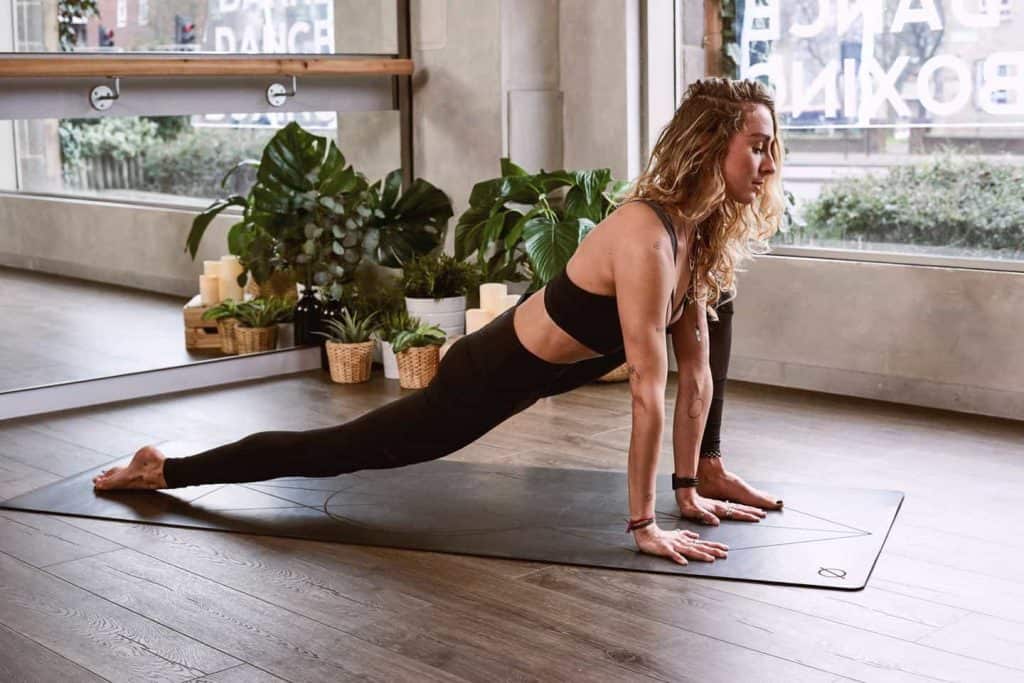Pilates is a training method for body and mind, developed by Joseph Pilates. Because he himself was a slender boy and had weak health at a young age, he experimented with various forms of sports and yoga to strengthen his body. Control and correct execution are central: breathing and awareness to activate the right muscles form the basis of each exercise. As a result, you develop longer muscles and more flexible joints, along with a stronger, balanced body.

Table of Contents
How Pilates Works
All Pilates exercises start by building strength in your powerhouse or center, which is the abdomen, pelvis, and lower back. The muscles closest to the skeleton are trained so that your body can be better supported. Pilates is done with tension in the abdominal muscles, pelvic floor, and multifidus, breathing deeply and widely through the ribcage so that you do not lose your powerhouse. The ideal posture is neutral: this means allowing your spine to maintain its natural curvature, keeping the head in line with it, and placing the pelvis without tilting it forward or backward. All of this is to train the back muscles to support your spine in its natural position.
Of course, every back is different, and exercises and postures need to be adapted to each body type. The spine is made mobile again in all directions: both flexion, extension, and rotation occur in every class for healthy backs. All these movements ensure that you learn to move the vertebrae one by one. The pressure on the vertebrae is relieved, making you feel taller and lighter. But not only the abdominal muscles and the back are trained, the whole body is involved. The arm and leg muscles are stretched and lengthened, the joints become more flexible. Your body is lifted out of its skeleton: thanks to Pilates, your skeleton is supported by the muscles. Since the exercises aim for a perfect posture, your body is brought into balance: left with right, front and back, top and bottom.
Benefits of Pilates
Pilates offers dozens of benefits for the practitioner who trains regularly and with precision. Below are the main benefits of Pilates:
- The practitioner gains increased lung capacity and better blood circulation through deep breathing.
- Muscle strength and flexibility are improved, especially those of the core muscles.
- The spine becomes more flexible and resilient.
- The body becomes much more stable around the pelvis.
- Coordination, both muscular and mental, is improved.
- Bones become stronger and joints more flexible.
- Pilates exercises ensure a balanced development of all muscle groups.
- Through regular practice, your posture will improve, you will sit more upright, and move more smoothly and gracefully.
- Improved lung capacity and circulation through deep and healthy breathing are another important benefit. Furthermore, the abdominal and back muscles are strengthened, and posture, balance, and control over the body are improved.
Pilates and Weight Loss
Joseph Pilates intended to help war veterans with their rehabilitation. These people were often disabled or injured and could not follow a normal exercise program. He studied various types of exercises and extracted from yoga and aerobics those exercises that did not require high physical demands. The exercises are very effective in burning energy, becoming more agile, and developing complex muscle groups. There are more than five hundred different exercises. Most people choose to do certain series of exercises that target the major muscle groups of the body. Virtually all exercises lead to weight loss. In addition, there are the breathing exercises. These exercises are aimed at bringing oxygen to the blood. This increases the absorption of oxygen and expedites the elimination of toxins from the blood. Pilates offers exercises where you exhale all the oxygen from your lungs with force, after which you have laid a foundation for very beneficial inhalations. This allows the whole body to receive more oxygen and burn energy more quickly.
Difference Between Pilates and Yoga
Naturally, you will read many similarities between yoga and Pilates. Both train your mind and body, and your breathing is very important. Resistance training with your own body forms the basis of both, and you achieve a good physical and mental balance. So many of these aspects are also encountered when practicing yoga, yet there are significant differences between Pilates and yoga:
In yoga, the greatest effect is inward-focused. Your mind is central, where you meditate and breathe. Whole health is the focus in yoga, not just good exercises and breaths but also healthy nutrition.
In Pilates, it’s about improving your core, the muscles around your waist. This ensures that you achieve better overall physical condition with increased flexibility. Your stability improves, and you develop better posture.

